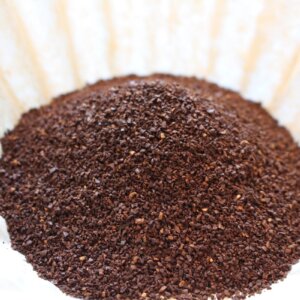Have you noticed the idea of seasonal eating “cropping up” in lifestyle magazines and organic-themed publications? I find myself viewing the trend with the same strange feeling as when I read modern articles about off-grid living, or pasturing livestock.
Though these concepts are presented as new, they honestly couldn’t be more ancient.

As mislabeled as the current fad may be, the inclination is a good thing. Perhaps the current gravitation toward these lifestyle choices is a cry for a better way of living — one we’ve buried under takeout cartons, door-delivered burrito wrappers, and frozen pizza boxes.
Maybe it’s a subconscious rejection of the lives we’ve inherited; contrived, artificial, and disconnected from the cyclical, seasonal patterns found in the natural world. Or maybe it’s the realization that an artificially-ripened tomato in January tastes about as good as the cardboard it was shipped in.
Whatever drove you to read an article on this topic, I hope to give you some “food for thought” as you consider what to put on your plate through the year.
What Eating Seasonally Means

Seasonal eating is an incredibly simple concept. It is merely the act of eating vegetables when they’re naturally ripe and in season. But our modern, globalized world has made that a surprisingly hard thing to understand or see in our standard grocery stores.
By the artificial might of calcium carbide and ethephon, across-the-ocean shipping, and industrialized greenhouses, the cook who demands a fresh strawberry can have it, any time, any season. That doesn’t necessarily mean the strawberry tastes good, or carries its full potential nutritional benefits, but the strawberry now exists, year-round. Likewise, the rest of the produce in your grocery story may have come from hundreds of miles away, or may have even been harvested a year ago. It’s hard to know.
Seasonal eating is an attempt to return to a simpler way of eating — one that doesn’t require or demand a strawberry when there are no strawberries to be naturally found. Instead, seasonal eaters relish what is naturally available. Whatever is naturally available, therefore, is connected to the eater’s growing zone and local farms, meaning there’s no one-size-fits-all diet for the seasonal eater. Instead, diet is personalized and customized by the very land we live on.
How Does Eating Seasonally Make a Difference?
Frankly, the answer to this one can go as shallow or as deep as you want to take it.
On the surface, eating food in season allows you to enjoy the peak nutrition and flavor of food harvested when it was ready, and at the time it typically wants to be ripe. Vegetables harvested in the season they’re designed to grow will have naturally ripened, or at least, be a whole deal fresher and tastier than something shipped in from who-knows-where, who-knows-when, and forced to ripen through artificial means.
Seasonal eating also supports local farms and farmers, especially if you buy from them directly. That practice bolsters your local economy and gets you connected with real food in your community, rather than the personality-less bag-o-stuff at the megamart.
Seasonal eating, however, is far more than that. It’s a return to a diet that is, in my opinion, more based in reality. Throughout all of time (well, until relatively recently when globalization and refrigeration changed things up) there weren’t really choices when it came to what food was available. Strawberries came in the spring. Pokeweed sprouted in early summer. Squash ripened in the early fall. Eggs weren’t laid in the winter. The only way to eat foods beyond the day they were plucked from their stems was to ferment, dry, salt, or store them in underground pits. If you wanted a fresh, ripe strawberry mid-January, too bad. There weren’t any.
But as negative as this sounds at first, I actually think it’s a good thing. Eating vegetables in season creates a tasty pattern to the year that creates seasons of plates along with the seasons outside. The traditional pairings of flavors suddenly make perfect sense as you prepare early spring salads, midsummer shakshuka, autumn roast corn, or comforting baked squashes and roots for the winter dinner table. And if you grow your own food, you’ll also be privy to the most ephemeral of offerings that are impossible to ship to most grocery stores: garlic scapes, radish seed pods, vine-ripened tomatoes, or corn ten minutes off the plant.

This cultivates a renewed appreciation for foods as they become available, rather than the dullness that comes from having everything at your fingertips at all times. It even sprouts gratitude, where there otherwise might have been none. I know it may sound fluffy to advocate for gratitude and appreciation of vegetables, but those seasonal attributes make folks relish eating them, treasure their presence at the table, and take care not to waste them after waiting so long.
I would even argue that the endless availability of all foods has bred a thoughtless indifference in much of the industrialized world to food in general. Since the presence of a full spectrum of vegetables is assumed, it’s easy to slide into the mentality that allows large-scale food waste and a culture that is generally fine with pushing the broccoli to the side of the plate.
Getting Started With Seasonal Eating
1. Learn How to Cook
You need to know how to cook your own meals. Even if you feel like you’re all thumbs at the stove, there’s no better time to refine your skills and pick up techniques than today. Stir-fry, roasting, and stewing aren’t hard, and finding simple, achievable recipes will help you build confidence. There are endless recipes and tutorials online for learning how to become an excellent home cook.
2. Connect With the Land
You need to be connected to the land. The truth is, no matter how much research you do on the topic, no matter how much you believe in it as a lifestyle, seasonal eating is just a baseless abstraction until you have a bit of land. You can try to buy seasonally, you can visit excellent, informative websites like The Seasonal Food Guide to start learning what grows when, but it is largely an artificial construct.
Unless you have some encyclopedic knowledge of garden vegetables, eating seasonally will forever be a research endeavor. But once you have ties to some bit of land that is growing food, you won’t need to look up when a tomato is naturally ripe or when a cucumber is ready to pick — it will be there, in front of your face, silently declaring it is ready to be eaten. Seasonal eating will make sense naturally. The way it has for centuries.

One of the most obvious ways to build this relationship is to grow a garden. I don’t care what size — even a windowsill salad box. Getting your hands in the earth and planting seeds forces you to pay attention, learn, react, and understand the cyclical patterns of plant growth. Squash refuses to sprout in early spring. Sweet peas shrivel under the hottest summer sun. The way the vegetables you grow react to the seasons will start to give you cues to when they’re best to eat.

Foraging is another fantastic way to start developing an attitude for eating what is available in your location. Even if you only have a little suburban backyard, observing what is growing and when, will develop an awareness that no book can impart. We have a huge array of foraging articles and videos available here at Insteading, if you’re interested in learning more.
Going to your local farmers market is another way you can start getting a sense of what grows when. This option can be limited depending on the variety at your local market, though. If you’re willing to ask questions and take the time to listen, you’ll be sure to meet lots of farmers who can teach you what they know, who offer vegetables and fruits you’ve never seen in a store, and who have ties to the land they can share with you.
Getting connected with a local CSA or urban garden program can also give you a patch of earth to know, even if you currently live in an apartment or dorm. There are abundant opportunities for those willing to look.
3. Take It One Day at a Time
The third element is to take it slow and really dig into the process of learning. Reconnecting with the land in such a visceral way can be a delightful journey of rediscovery, but it will only stay so if it doesn’t become some sort of guilt-ridden, knowledge dump of impossible proportions. Start by getting to know your favorite foods better, then branch out and continue expanding your repertoire season by season. Eventually, your familiarity will grow, become instinctive, and embed itself in your understanding. This process takes time. Let that time be taken, and enjoy the ride.
Sample Menus From a Midwestern, Zone 6 Homestead
These meal ideas are totally connected to my patch of earth, which means they may be somewhat frustrating for anyone who doesn’t live in Zone 6. All the same, I hope they are an inspiring touchpoint for someone curious to see what this sort of life looks like in action. If you decide to try to eat in a more seasonal manner, you’ll become connected to what is available where you live, and may likewise, come up with an entirely different, yet just as personal, series of menu items.
Spring Seasonal Cooking
This is the time for radishes, lettuce, fava beans, and peas. Foraging will give you violet leaves, hairy bittercress, tender dandelion and chicory leaves, field garlic, and lots of edible flowers. At mid-spring, pokeweed shoots start to become available. And as the spring finale, wild strawberries will be ripe for the picking as the weather begins to warm. Your chickens will start laying eggs again, too.

Possible Spring Menu
- Breakfast: Radish greens and roots sauteed with garlic leaves, served with fried eggs
- Lunch: Pokeweed greens or greens fritters , served with cornbread
- Dinner: Garlic scapes and peas, sauteed with butter and fresh herbs, served over whole-wheat gnocchi and topped with canned tomato sauce and cheese
Summer Seasonal Cooking
This is the season for cooking flatbreads over an open fire and relishing the first harvests from the garden. The goats should be giving plentiful milk, with their kids now cavorting beside. Herbs should be beautifully leafed out, tomatoes will finally start turning red, and cucumbers are dangling like green gems. You might be swimming in eggs now, too! Additionally, brambleberries are in abundance. Now is a great time to pick as many as possible and preserve them for the winter.

Possible Summer Menu
- Breakfast: Shakshuka made from fresh tomatoes, eggplant, herbs, and chicken eggs, served with fresh flatbread
- Lunch: Israeli salad and hummus, served with toasted flatbreads
- Dinner: Saag panner made with foraged and garden greens (often Swiss chard, beet greens, and wild spinach are available now), paneer made with goat milk, served with brown rice
Fall Seasonal Cooking
Fall harvests send the kitchen into a flurry of activity. Frost threatens all the summer annuals, and you pick everything available, even if it’s not fully ripe, yet. There’s lots of okra, green tomatoes, squash, eggplants, and peppers to fill baskets and canning jars. Acorns begin to drop, an abundant harvest that nobody planted but many can benefit from. It’s time to dig potatoes, too, before the voles get them. All the perfect roots go into storage, but there’s going to be the inevitable damaged ones that the shovel nicked or the vole nibbled. Though they can’t be stored, they’re not wasted … if they’re that night’s dinner!

Possible Fall Menu
- Breakfast: Acorn pancakes
- Lunch: Stir-fry vegetables (try okra, peppers, eggplant, onions, and carrots), served with rice
- Dinner: Roasted damaged potatoes, turnips, beets, parsnips, and carrots, served with the sauteed green tops of the carrots, beets, and turnips and drizzled with a balsamic reduction
Winter Seasonal Cooking
With the woodstove going all day, now is the time for making slow-simmered stews on its hot surface. This is a great time to cook that fall-butchered poultry as a savory stew, combined with the potatoes, carrots, onions, parsnips, sunchokes, and turnips that have been secreted away in storage for winter. It is also a season for lots and lots of sourdough bread baking — heat from the oven keeps the kitchen cozy.

Possible Winter Menu
- Breakfast: Whole grain porridge made of wheat, rye, acorns, and cornmeal, topped with thawed wild berries on special days
- Lunch: Root vegetable soup with chicken gizzards and hearts, served with croutons made from yesterday’s leftover bread
- Dinner: Roasted pumpkin and pumpkin seeds, fresh sourdough bread with butter or olive oil, braised cabbage and onions
I’m all for enjoying the proverbial strawberry that I’ve used as a metaphor throughout this article. But I hope you can join me in waiting for them to ripen on the plant, and then, in the most perfect of sun-soaked moments, eating them as fresh as can be.
We would love to hear seasonal eating stories and recipes from you. What seasonal treats have you discovered in your local area? What are some traditional dishes that you enjoy that are made from in-season vegetables? And how do you get local dirt beneath your fingernails? Let us know below!









































Seasonal eating also ensures you are getting a variety of nutrients throughout the year. You will not be eating the same food all year long and your eating is balanced and you are getting everything you need to be healthy, not just a few of the same things continually which can be limited in their overall nutritional profile.